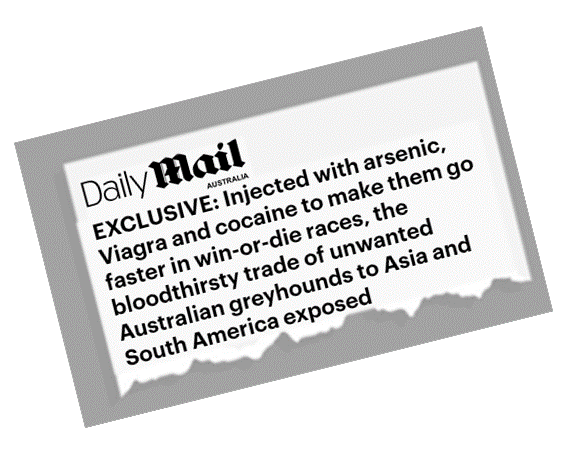by Jeff White, International Reporter, Coalition for the Protection of Greyhounds
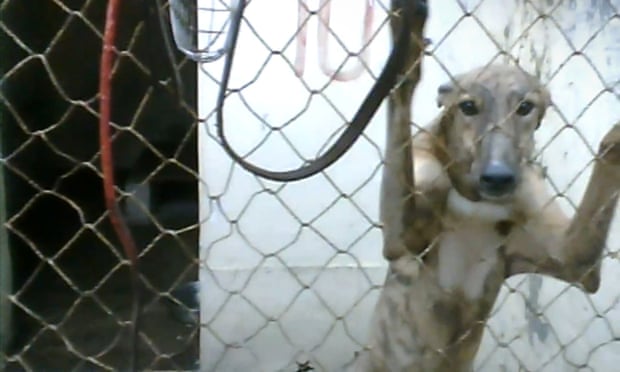
For many years Australia was the world’s biggest exporter of greyhounds. As recently as 2015, official government export statistics for the year showed 200 gone to Macau (a tiny semi-autonomous region on the south coast of China), 9 to the United Arab Emirates, 30 to Hong Kong, 48 to China itself, 15 to Taiwan, 6 to Korea, 4 to Pakistan, and 275 to New Zealand.
But over the five years since then, the picture has changed dramatically: 0 to Macau and Pakistan, 1 to Korea (in 2016), 2 to China (none since 2018), 2 to Taiwan (none since 2018), 3 to the UAE (none since 2016), and 12 to Hong Kong (none since 2018). A few still go to Ireland, the UK, and the USA, for breeding purposes. And the usual exports to prop up the New Zealand racing industry continue, although even those have declined in recent years. No greyhounds have been sent to Vietnam since 2009, when that country’s fledgling racing industry, set up with Australian help, started its own breeding program. Before that, Vietnam had been a favourite export destination for racing dogs:
So what caused the remarkable decline in greyhound exports since 2015?
This is the story of an outdated and superfluous industry, lurching from one public relations disaster to another, of government indifference and inertia, and of a resulting explosion of public awareness, anger, and pressure that has forced the industry to change.
Veterinarian John Newell, from Belmont, NSW, helped to establish greyhound racing in Vietnam and Macau and is infuriated by calls to ban exports. Newell says protesters have the wrong picture. Retired racing dogs exported to those countries get a longer life expectancy and often better care than in Australia, with strict controls on their welfare, he says. “In Vietnam, we have a lovely compound close to the coast which has the afternoon sea breeze and dams for swimming and they are well looked after.”
— “HOUNDED TO DEATH”, SYDNEY MORNING HERALD, OCTOBER 25, 2004
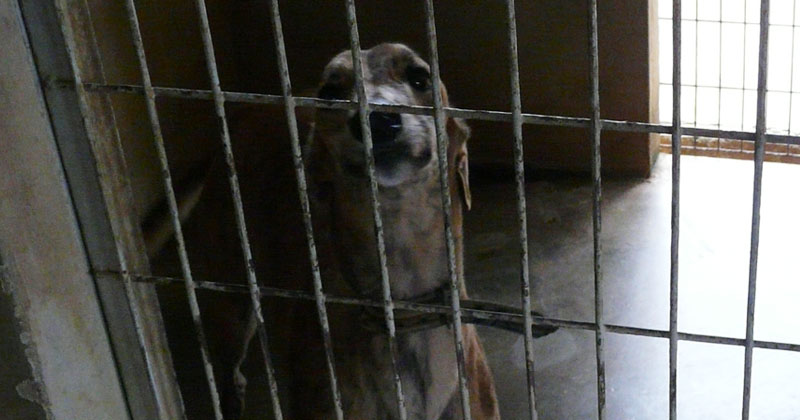
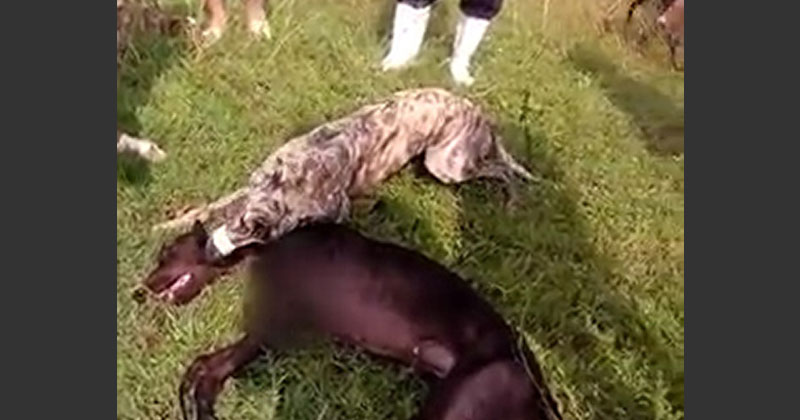
Successive federal governments have done nothing
None of this change has occurred because of action or policy change by the Commonwealth Department of Agriculture, or amendments to the Export Control (Animals) Order 2004. Successive governments have remained steadfastly indifferent to the plight of exported greyhounds. Among several possible reasons for this attitude I offer two: First, the fondness of governments throughout Australia for the gambling industry in general and its integrated racing industries in particular.
Second, and perhaps even more important, is that Australia is the world’s biggest exporter of livestock for slaughter in foreign countries, worth well over a billion dollars a year. Any show of government concern for the fate of exported greyhounds could signal a possible tiny concession to the popular animal welfare lobby that wants to see both greyhound racing and livestock exports banned. The political consequences could bring down politicians and governments.
The “passport” system for greyhounds
The racing industry itself, represented by the umbrella organization Greyhounds Australasia (“GA”), has had an export “passport” system in place since July 2004. Participants are required by the industry’s own rules of racing to apply for and obtain a passport (really just a kind of permit) and a “certified pedigree” from GA for each greyhound they intend to export. The initial purpose of the passport scheme was to provide the industry with statistical oversight and tracking of greyhound exports, and the reasons for export as stated by the applicant. The prospective welfare of the greyhound itself was not a priority.
In September 2005 GA developed a National Animal Welfare Policy for the domestic Australian racing industry, but it was not until seven years later, in 2012, that GA established its Required Standards for Countries Seeking to Import Australian Greyhounds (the “Required Standards”). This, for the first time, set minimum standards for the welfare of exported racing greyhounds in their destination countries. Those standards formed the basis of a review by GA of welfare standards in several dog racing countries, which was concluded in December, 2012. The idea was to develop welfare-based criteria for the issuance of greyhound passports.
That review was done largely by sending self-reporting questionnaires to racing control bodies in seven “key export jurisdictions” where “regulated” (i.e. commercial) greyhound racing took place (the UK, Ireland, the USA, the Czech Republic, Vietnam, Macau, and New Zealand). Other export destinations where greyhound racing was known or believed to take place on an “unregulated” basis (such as China, Japan, United Arab Emirates, and South Africa) were not assessed in this manner; GA decided instead that passports would not be issued thereafter for exporting dogs to any such countries except on a case-by-case basis, in which the onus was on the exporter to satisfy GA that the dog would be well cared for at its destination country. This effectively halted the issuance of GA passports to those countries, except for greyhounds intended to be kept as pets.
Of the “regulated” export jurisdictions, Macau and Vietnam were identified by GA as non-compliant or not fully compliant with the Required Standards. Vietnam was essentially irrelevant, as there had been no requests for Australian greyhounds to be exported there since 2009, as noted above. Macau was coming under increasing international criticism for its brutal treatment of greyhounds — so much so that GA actually went there in 2013 to investigate for itself.
They found that close to 50% of Macau’s racing stock were killed each year due to racing deaths, injuries, and disease. The dogs were living in tiny kennels and not receiving adequate exercise.
A South China Morning Post report in 2011 had revealed that 383 underperforming dogs had been killed in the previous year at the Macau Canidrome. GA has not issued a passport for export to Macau since March 6, 2013. As we now know, the Canidrome was shut down by government order in June 2018, putting an end to Macau’s dog racing industry.
The other five regulated racing jurisdictions were rated as fully or close to fully compliant with GA’s Required Standards, and deemed worthy of support under GA’s passport scheme. But despite a long (but now abandoned) process of negotiation between GA and federal Ag Department officials, GA’s passports have no official or legal recognition by the Commonwealth government, and are not required as part of its approval process for exporting greyhounds.
The only enforcement tool backing GA’s passport scheme is a rule in each state’s own racing governing body, which makes it a discipline offence to export without a GA passport, and is punishable by fines and/or disqualification periods. But anyone who is not a registered industry participant is immune from those rules, and until the last five years, enforcement of the passport rule by industry regulators was virtually nonexistent.
Greyhounds Australasia finally goes public
Although GA’s review of welfare standards described above was completed in 2012, it was not made public until June 2014, after repeated demands to do so by the late John Kaye MLC of New South Wales. Kaye was the deputy chair of the select committee of the Legislative Council on greyhound racing in the state, which has been by far the largest source of greyhounds exported from Australia. He understood, as few did at the time, why regulatory bodies tolerated exports and failed to enforce their own passport rules.
“a market where they can dump dogs that don’t win races, but Australian wastage rates are artificially suppressed by outsourcing more than 280 deaths a year to Macau”
As he told the Sydney Morning Herald in December 2013, not only do greyhound exports provide the industry with “a market where they can dump dogs that don’t win races, but Australian wastage rates are artificially suppressed by outsourcing more than 280 deaths a year to Macau”. In its initial report of March 2014 the select committee noted, at page 110:
Greyhounds are sold and exported to overseas greyhound racing industries, particularly to China, Vietnam and South Korea. In 2010, 797 greyhounds were exported from Australia, 280 of which were exported to Macau.
The RSPCA argued that many countries imported greyhounds from Australia but either do not have animal protection laws, or they are not enforced. Once greyhounds depart Australia, there is a lack of substantial animal welfare regulations and no guarantee that greyhounds will be treated humanely. The Australian Government does not take responsibility for animals once they have been exported.
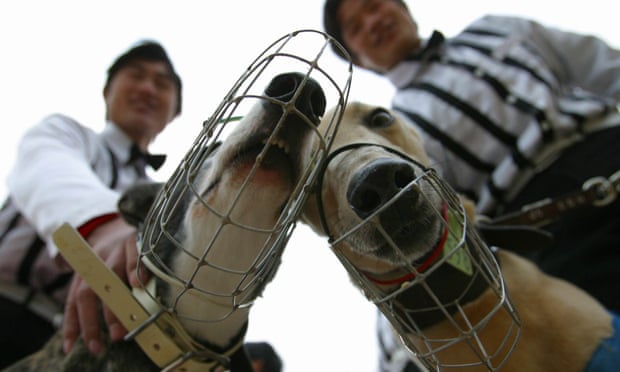
The belated release of the GA passport review report, the publication online of submissions made to the select committee, and its final report in October 2014 were the first steps in bringing about broader public awareness of the cruelty of the industry.
Of course, there were further bombshells to come.
The live-baiting scandal shocks the public

On February 16, 2015, the Australian Broadcasting Corporation television program Four Corners aired an episode called “Making a Killing”, which reported the results of an undercover investigation, complete with covert surveillance video, that revealed the existence of widespread live-baiting in the training of racing greyhounds. Its existence had been denied by industry participants and regulators alike for years, but now it was clear that the cheating and cruelty depicted in the program had permeated the Australian industry right to the top levels of well-respected and successful veteran trainers, some of them “hall of famers” and multiple honourees.
What was also clear was that the torture of rabbits, possums, kittens, piglets, and other small mammals used as training “bait” had been going on for many years, while hundreds of people in and around the industry had been aware of it and had helped to keep it secret. This was the start of a year that would become a watershed in the developing process of citizen concern for the welfare of racing greyhounds
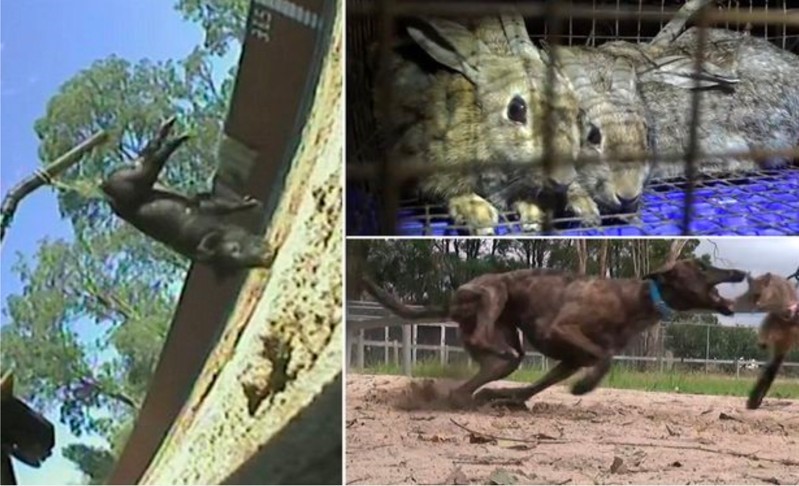
Three racing states implicated in the Four Corners broadcast – Queensland, Victoria, and NSW – launched inquiries into their dog racing industries. Meanwhile, mass burial grounds of racing greyhounds turned up near Bundaberg, Qld. and Cessnock, NSW.
In May John Kaye tabled legislation on behalf of the Greens to ban greyhound exports and wind down the dog racing industry. The MacSporran Report on greyhound racing in Queensland was released in June, and while it ignored the issue of exports, it did have many criticisms of the regulation of the industry, and made several recommendations for reform and restructuring.
Also in June, the Special Commission of Inquiry into the Greyhound Racing Industry in New South Wales, headed by Michael McHugh AC QC began holding public hearings, and sensational testimony emerged about all aspects of the industry, including greyhound exports. Newspaper editorials and columnists began calling for the banning of greyhound racing, and public opinion polls said the same thing. Criminal charges were laid against dozens of individuals for live baiting. All of these events kept the cruelty of greyhound racing in the daily news and in the minds of the public, and inflicted an existential fear on the industry itself.
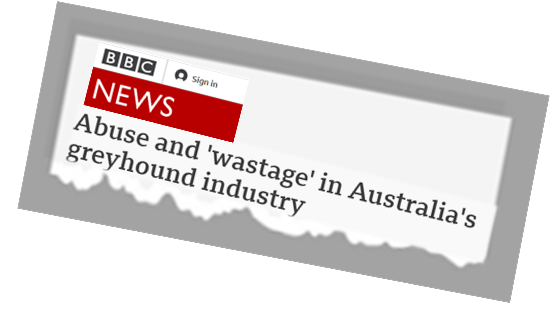
Regulatory oversight failures exposed, and rule-breakers punished
Then on December 9, 2015 ABC television struck another blow, with its broadcast of the results of a six- month investigation into greyhound live exports on the program 7:30. The episode “Death Trade” focused in large part on brothers Stephen and Mark Farrugia, who had for years been exporting Australian greyhounds to Macau and China, all without GA passports, but all quite legally under federal export rules. A mere few hours before the broadcast, Greyhound Racing New South Wales announced an inquiry into unauthorized exports, with semi-judicial hearings and witness testimony under oath, to begin in January.
The GRNSW inquiry led to the charging of 179 NSW industry participants for complicity in the export of greyhounds without GA passports between 2013 and 2015.
Almost all of those participants, however, had their charges dropped after they co-operated with the inquiry. They had sold greyhounds to people like the Farrugia brothers, who purchased the dogs for $500 each, and sent them to race and die in Shanghai and Macau, making a $300 profit on each sale.
At the end of a long period of disciplinary hearings and an appeal to the Racing Appeals Tribunal, the final penalty to each of the Farrugia brothers, in September 2018, for exporting 98 greyhounds without GA passports was merely a one-year disqualification and a fine of $14,700.
On May 31, 2018, two other self-appointed export brokers, Sam and Patricia Cauchi, were fined $22,000 each and disqualified for 3.5 years for sending 212 greyhounds to live and die in the Macau Canidrome between 2013 and 2015, without first obtaining the consent of GA. The Cauchis had been involved in the regular export of greyhounds to Macau since 1994, and only stopped when Qantas and Cathay Pacific airlines suspended their carriage of racing greyhounds into Hong Kong in December 2015, under international pressure from greyhound welfare advocates. All air imports of greyhounds to Macau had to go through Hong Kong.
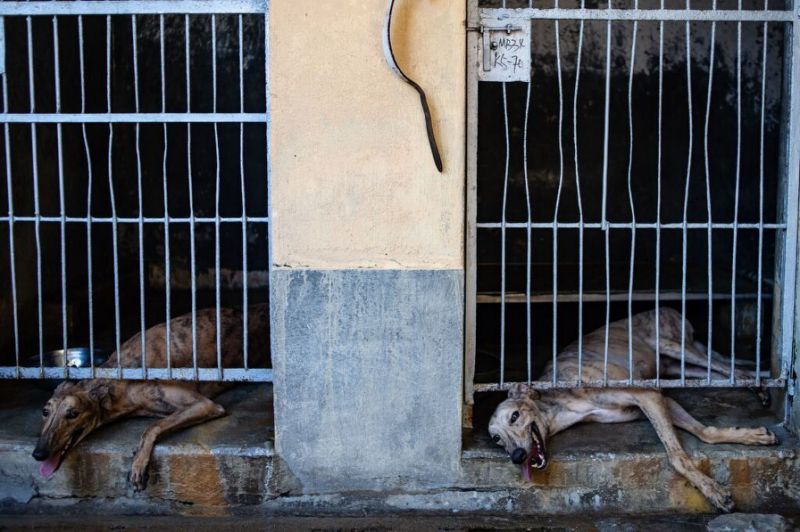
McHugh Inquiry reveals the ugly truth about exports
Meanwhile, the McHugh Inquiry report came out in June 2016, and its first recommendation was to shut down the NSW greyhound racing industry. The state government’s acceptance of this recommendation, and later reversal of position, gave the industry a sobering near-death experience. The report also devoted an entire chapter of 19 pages to the export of greyhounds; I commend it to anyone who wants fuller elaboration of this issue than I have room for here. It appears at the end of Volume 2 of the report, and it includes these words:
19.110 – The Commission recommends that GRNSW, in conjunction with GA, continue their efforts to engage with the Federal Government with a view to increased action, by the Federal Government, in connection with regulating the export of live greyhounds. Given that a sizeable percentage of dogs exported from Australia come from NSW, the Commission also recommends that, by appropriate means, the NSW Government make representations to the Federal Government to implement the recommendations of GA concerning the export of live greyhounds.
To date, the Federal government has not budged.
So after decades of indifference to the fate of exported greyhounds, the Australian racing industry has been shamed by media and public pressure into creating and enforcing welfare-based export rules. In addition, exports are likely to decline further, as runaway breeding numbers are cut back in Australia (supply side), and the worldwide greyhound industry shrinks (demand side). But as Commissioner McHugh notes above, the issue will not be fully resolved until the federal government begins to show an interest in greyhound welfare.
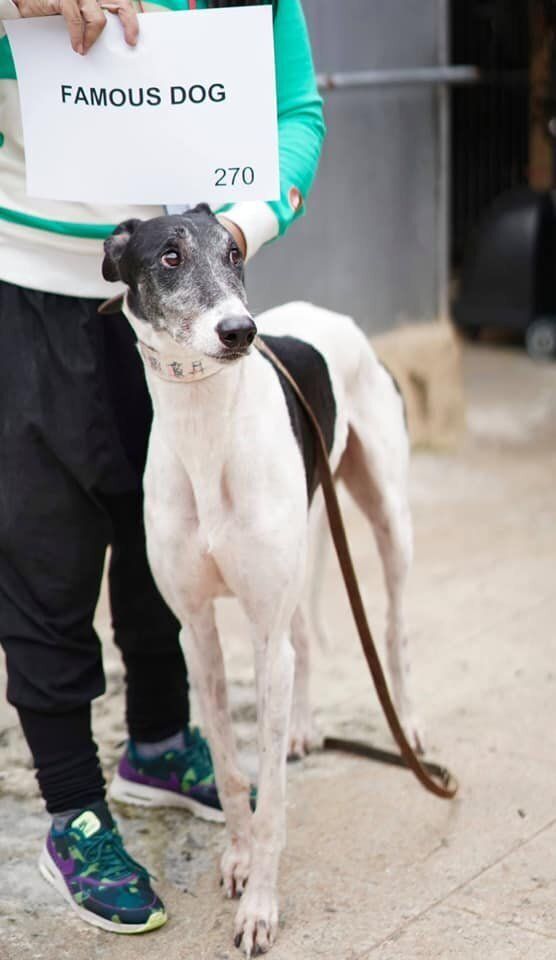
Source: Anima
This article appeared in Issue 10 of Greyhound Life Matters, the quarterly ezine published by the Coalition for the Protection of Greyhounds. Click here https://greyhoundcoalition.com/newsletter/ to view all editions of the ezine featuring articles from a great range of people with experience in all aspects of greyhound lives. You can also sign up and get Greyhound Life Matters direct to your inbox.
Links to recommended sources of information
McHugh Inquiry report, Vol. 2, Ch. 19: https://apo.org.au/node/65365
Official exports statistics, 2015-2020: https:// www.agriculture.gov.au/export/controlled-goods/ live-animals/live-animal-export-statistics/ greyhound-exports
Greyhounds Australasia Review of Australian Greyhound Export Welfare Standards: http:// www.galtd.org.au/sites/default/files/forms-and-documents/Final Export Standards Report June 14.pdf
NSW Select Committee on Greyhound Racing First Report, March 2014 https:// www.parliament.nsw.gov.au/lcdocs/inquiries/2136/Greyhound Racing in New South Wales – First Report.pdf
NSW Select Committee on Greyhound Racing Second Report, October 2014 https://www.parliament.nsw.gov.au/lcdocs/inquiries/2136/Second Report.pdf
ABC 7:30 program “Death Trade”, December 9, 2015: https://www.youtube.com/watch?v=rP-1bb8cFPs
